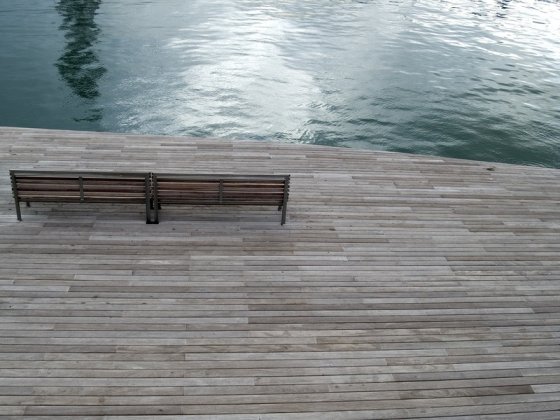In the heart of Australia, outdoor living and water sports are integral parts of our culture. It’s not uncommon for homeowners to have a private dock or a decking area to enjoy the serenity of the Aussie waters. Selecting suitable materials for your dock or deck can be daunting, especially on a budget. This guide explores affordable yet high-quality dock decking options that will keep the bank intact.

Table of Contents
Understanding the Basics of Dock Decking
The Significance of Dock Decking Material
Choosing the suitable dock decking material is crucial for multiple reasons. The decking material must be strong and resilient and withstand the harsh Australian weather, including the scorching summers and the chilly winters. Furthermore, the material must resist damage from salt or freshwater and exposure to UV rays. It should also have a slip-resistant surface for safety.
Factors to Consider when Choosing Decking Material
When selecting a material, consider the following factors:
- Durability: How well can the material withstand different weather conditions and the wear and tear from frequent use?
- Maintenance: What care does the decking require to stay in good shape?
- Cost: How do the initial and long-term maintenance costs compare with your budget?
- Aesthetics: Does the material meet your style and taste?
Inexpensive Dock Decking Options
Now, let’s delve into some cost-effective decking options.
Pressure-Treated Wood
Pressure-treated wood is one of the most inexpensive dock decking materials. Manufacturers treat the wood with chemicals to resist insect rot, decay, and damage. It’s an excellent option for freshwater docks, but its durability might decrease when exposed to saltwater over long periods.
The material is quite versatile, allowing for various styles and finishes. However, it requires frequent maintenance, like sealing and staining, to prevent splitting or cracking and retain its aesthetic appeal.
Composite Decking
Composite decking is made from a blend of wood fibres and plastic materials. While its upfront cost may be higher than pressure-treated wood, its long-term maintenance cost is significantly lower.
Composite decking is resistant to rot, decay, and insect damage. The material doesn’t splinter or crack, making it safe for barefoot use. It also comes in various colours and textures, imitating the look of natural wood.
It’s important to note that while composite decking is UV-resistant, it can get quite hot under direct sunlight. Some composite materials have a smooth finish that can be slippery when wet.
Modified Wood
Modified wood is an excellent middle-ground between natural wood and synthetic materials. The wood undergoes a chemical-free heat treatment process that improves its durability, making it resistant to rot and insect damage.
This decking material requires less maintenance than natural wood and offers a more authentic look than synthetic materials. However, modified wood may grey over time if not properly maintained, adding to its rustic charm or being seen as a disadvantage, depending on personal preferences.
Aluminium Decking
Aluminium is another affordable option for dock decking. It’s lightweight, strong, and resistant to rust and rot. The material does not warp, crack, or split, making it a low-maintenance option.
Aluminium decking often features a textured surface to prevent slipping. However, it doesn’t offer the warm, natural look of wood and can get hot under the scorching summer sun.
Making the Right Choice
Assess Your Needs and Budget
Before making a decision, assess your needs. If you prefer a natural look and are okay with regular maintenance, pressure-treated or modified wood could be your best bet. On the other hand, if you’re after durability and minimal upkeep, consider composite decking or aluminium.
Your budget is also a significant factor. While some materials are cheaper upfront, they require costly regular maintenance, impacting the long-term cost. Others might have a higher initial cost but low long-term maintenance costs.
Consider the Environmental Impact
It’s also important to consider the environmental impact of your chosen decking material. While affordable and durable, pressure-treated wood is treated with chemicals that can leach into the water. Composite decking, while stable and low maintenance, is made from non-renewable materials.
Choose a material that aligns with your environmental ethos. For example, modified wood could be a good choice if you’re looking for a more eco-friendly option.
Trial and Test
See if you can trial the materials before deciding. Walking barefoot on the decking, feeling the material, and seeing how it responds to water and sunlight can help you make a more informed choice.
Conclusion
Choosing the suitable dock decking material is a crucial decision that requires careful thought and consideration. While the cost is a significant factor, other aspects like durability, maintenance, aesthetics, and environmental impact should also influence your decision.
By exploring and comparing different options, you can find a decking material that offers quality without breaking the bank. Whether refurbishing an old dock or building a new one, a perfect, affordable decking option awaits you.




